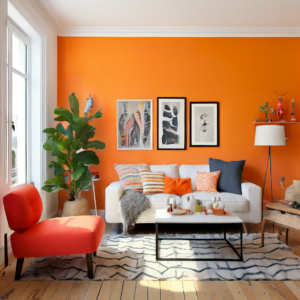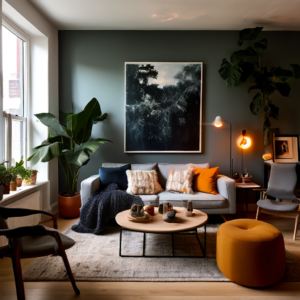Maximizing space in a small apartment hinges on smart hacks, and with nearly 18 million Americans now living in small apartments—a figure that continues to rise—it’s clear that efficient use of space is essential.
Forget the sprawling estates, think vertical, and let’s not waste an inch.
The walls are calling to you, and that’s where we begin. Forget about spreading out, we’re going up.
It’s all about tapping into that unused dimension, the space above your head, that many folks seem to just ignore.
It’s like discovering an extra room, the one you never knew you had.
When your floor space feels like a boxing ring, the only move is to build up.
This isn’t just about sticking any old shelf, it’s about intention, about creating space, and that space is a must.
Let’s start by talking about high shelves, not just for books, but for everything you don’t use daily—those cookbooks you pull out only on special occasions, extra linens, decorative items that collect dust down low.
They’re up there, out of the way but still within reach. Here’s a quick breakdown:
- Material Matters: You need something sturdy, wood, metal, or even durable plastic can do the job.
- Go High or Go Home: If you have the ceiling height, shelves that go all the way up create height and max out space.
- Keep it Tidy: Baskets or containers help keep things organized and avoid clutter.
- Step it Up: Keep a step stool handy for those hard-to-reach places.
Think of it like this, in a small kitchen, you put the less frequently used appliances up there.
In the living room, those decorative pieces or plants you are always rearranging can make a gallery out of thin air.
| Shelf Height | Ideal Use |
|---|---|
| Topmost Shelf | Rarely Used Items, Seasonal Decorations |
| Mid-Level Shelves | Books, Frequently Used Items, small Appliances |
| Lower Shelves | Everyday Items, Easy Access Items, Small kitchen gadgets |
Next, wall-mounted storage is your friend when you don’t have the room to expand.
It’s a magician’s trick, taking things off the floor and putting them on the wall and a clean floor makes the whole place feel bigger. Here’s a look:
- Floating Shelves: Sleek and versatile, perfect for books and plants.
- Wall-Mounted Cabinets: Ideal for items you prefer hidden, like cleaning stuff.
- Pegboards: Customizable for tools, crafts, or even kitchen gadgets.
- Wall Hooks: Perfect for coats, bags, or hats. Simple, but very useful.
Think of a kitchen transformed with shelves and racks.
A small office now has a pegboard to keep the tools in order.
It’s about using the walls as your storage ally and freeing your floor.
Don’t forget over-the-door space, that ignored bonus area, perfect for things that don’t need regular access. A few ways to use it:
- Over-Door Organizers: Great for toiletries, shoes, or accessories.
- Narrow Shelves: Good for books or linens.
- Hooks and Racks: Perfect for towels or hats.
A small bathroom can hold all your toiletries and cleaning supplies freeing up space, and your shoes stay organized off the floor in the closet.
You got to put those areas to work, every inch matters.
Mirrors aren’t just for your reflection, use them to make a room bigger and brighter.
They double the light and give the impression of more space. It’s a magic trick for small apartments:
- Large Mirrors: Put them on a wall to make the room look bigger.
- Strategic Placement: Position them opposite windows to bring in more light.
- Mirror Walls: A full wall of mirrors to double the visual size of the space.
- Decorative Mirrors: Use them to add style and reflect light.
A large mirror in a small living room can make the space look double.
And the hallway, often narrow, can get some more visual space with a simple mirror. It’s about using mirrors as space-makers.
And then there’s the furniture that does more than one job, like those sofa beds, they are the masters of disguise.
In the day you can lounge on a comfortable sofa, by night it becomes a bed.
They are perfect for a small space that is always at a premium.
- Style Choice: Look for a sofa bed that fits in with your decor.
- Comfort: Make sure the mattress is comfortable.
- Mechanism: A good one is easy to use.
- Storage: Some sofa beds include extra storage.
A sofa bed in a small living room serves as the main seating area during the day and turns into a bed at night when you have people staying over.
Ottomans, they are not just footrests, they’re storage units in disguise.
These guys give you seating and storage together, useful in small spaces.
- Size Matters: Pick one that fits your space and still has storage without being bulky.
- Material: Make sure that it matches the other decorations and is durable.
- Storage Check: Make sure the storage capacity meets your needs.
- Versatility: Some ottomans can be used as coffee tables or extra seating.
You can put extra blankets and pillows in them, or even books, and they serve as extra seating when you have people visiting.
Nesting tables are like Russian dolls, they stack neatly when not needed.
It is about making the most of your space and making it flexible.
- Right Material: Choose tables that fit your decor and are durable.
- Size Check: Make sure they are proportional to the living space.
- Versatile: They can be used as side tables, coffee tables, or even for dining.
- Easy Storage: They are easily stacked when not needed.
In a small living room you can use them as side tables or when you have more people over you can pull them all out and then stack them back up when you are done.
When picking multifunctional furniture you have to think about your lifestyle, measure the space you have, prioritize your needs, and make sure that you invest in good quality pieces.
If you do all this, your furniture will be an asset and not a liability.
Now, let’s talk clever storage solutions, it’s about managing the mess, a place for everything.
Your storage is like a personal assistant, always keeping things in order.
Under the bed is a goldmine that many people forget about, a hidden room perfect for items you do not need every day.
- Storage Containers: Use flat bins or bags to keep everything organized.
- Rolling Drawers: For quick access, drawers that can easily slide under the bed are a great idea.
- Vacuum Bags: These are great for bulky stuff like bedding or seasonal clothes.
- Labels: Make sure you put labels on the containers so you know what’s inside.
You can put off-season clothes or extra bedding. Use all the space you have.
Drawer dividers are simple yet effective, keeping things tidy. It’s like creating compartments in your drawers.
- Right Size: Choose dividers that fit your drawers well.
- Adjustable: Go for dividers that you can customize.
- Use Them All Over: In the kitchen, bathroom, or office.
- Maximum Space: They will help you use all the available space in every drawer.
In the kitchen, they can help with utensils and silverware.
In your bedroom, they can separate your socks, underwear, and accessories.
Baskets and bins are your versatile friends, portable storage units for anything you want.
- Material: Go with something that matches your décor.
- Different Sizes: Get different shapes and sizes to suit different needs.
- Label Them: Put labels on each basket and bin, so you can see what’s inside.
- Multi-Use: Use them for books, toys, linens, or any other items.
Baskets in the living room for magazines and remotes, bins in the bathroom for toiletries, make the most of these storage solutions.
Finally, your closet: It’s a storage area but often it becomes a mess, think of it as a mini room that needs to be organized efficiently.
- Double Hanging Rods: Add a second rod to double your hanging space.
- Shelf Dividers: These will create sections for folded items.
- Vertical Organizers: For bags, scarves, and accessories.
- Clear Containers: To see everything easily.
You can have one hanging rod for shirts and the other for pants, with shelf dividers for folded items and vertical organizers for your accessories.
Decluttering, less is more.
Get rid of what doesn’t bring value, keep what matters, and it is time to start decluttering. Decluttering is like spring cleaning for your life.
The KonMari method tells us to focus on what we want to keep instead of what to get rid of, so “does it spark joy?” That’s the question.
- By Category: Gather all items in one category and check each item individually.
- Spark Joy: If it does not, let it go.
- Thank Items: Thank the item for its service.
- Vertical: When storing items, place them vertically.
When you do clothes, you have to hold each item and ask if it sparks joy.
Regular purges are not a one-time thing, they have to be a habit.
It’s like a regular maintenance check for your home:
- Avoid Build-Up: Prevents clutter from accumulating.
- Manageable: Makes decluttering less overwhelming.
- Decision-Making: Helps decide what to keep and what to discard.
- Mental Health: Creates a sense of calm and well-being.
You can do a purge every three months, go through each room, and get rid of things you no longer need.
Paper documents pile up. Transform them into digital files.
- Scan: Scan all your documents.
- Organize: Create a system on your computer.
- Back Up: Regularly back up your documents.
- Shred: Once you have them digitized, shred the paper copies.
Bills, tax documents, and medical records can be digital.
You can finally free up all the space those papers are taking up.
When getting rid of things you do not have to throw them all away, donate, sell, give away, or recycle, find a new home for them.
And now we optimize each room in your apartment, each with its own set of challenges.
The living room is a flexible space, a place to relax, entertain, and work.
- Multifunctional Furniture: Sofa beds or storage ottomans are great ideas.
- Vertical Storage: Use your walls and shelves.
- Light and Bright: Mirrors and light colors are your allies.
- Keep it Tidy: Keep a place for everything.
Choose a sofa bed that provides extra sleeping space and use wall shelves to store your items.
The kitchen is the smallest room, but it’s the most used. You must make it functional.
- Vertical Storage: Shelves and pot racks are a good option.
- Drawer Dividers: To keep your cutlery organized.
- Countertop Organization: Store frequently used items.
- Rolling Cart: Extra space for counter and storage.
Your bedroom, it’s your sanctuary, it’s a space to relax, sleep, and recharge.
- Under-Bed Storage: Use under-bed storage for extra linens.
- Minimalist Decor: Minimal decor creates a sense of calm.
- Calming Colors: Soft colors promote a relaxing atmosphere.
- Proper Lighting: Warm lighting creates a relaxing space.
The bathroom, small, but can quickly become a mess. You need to organize it smartly.
- Over-Door Storage: For toiletries and cleaning supplies.
- Wall-Mounted Shelves: To store toiletries.
- Baskets and Bins: To organize items.
- Clear Containers: See what’s inside.
The entryway, the first impression, your chance to set the tone of your entire home.
- Wall Hooks: To hang coats, bags, and hats.
- Console Table: To store mail and keys.
- Mirror: To check your look before you leave.
- Baskets: To store shoes.
Lighting changes the perception of space, making it look bigger.
Think of it as a tool, not just a way to see things.
Natural light is precious, it makes the space feel more open, so:
- Keep Windows Clear: Do not block your windows.
- Light Window Coverings: Use sheer curtains to let the light come in.
- Mirrors: Place mirrors to reflect natural light.
- Light Colors: Light walls and furniture will reflect light.
Lamps can change the whole feel of the room and create a specific atmosphere.
- Layered Lighting: Use different light sources to create depth.
- Floor Lamps: To light up the corners of your space.
- Table Lamps: To add a warm feeling to the space.
- Wall Sconces: To save space and add ambient lighting.
Mirrors amplify the light in the room.
They are strategic tools to bring out the most of the lighting you have.
- Large Mirrors: To reflect natural light.
- Mirror Walls: To double the perception of light and space.
- Decorative Mirrors: To reflect light in different directions.
- Strategic Placement: Maximize the light from the room.
Lighting and space are interconnected, light can create the illusion of more space.
- Brightness: Bright light makes the space more open.
- Shadows: Creates depth and dimension, but too much can shrink the space.
- Color: Light colors make the space feel larger while dark colors make it smaller.
- Direction: Uplighting makes the ceiling appear higher.
Color and decor create illusions of space, choosing the right colors can make your apartment feel larger.
Light colors are the best, they reflect light and make the space feel more open.
- Walls: Paint your walls with a light color.
- Furniture: Use light-colored furniture.
- Accessories: Use light-colored accessories.
- Ceiling: Light color to make the ceiling appear higher.
Vertical stripes create the illusion of height. They add to the feeling of a higher ceiling.
- Wallpaper: Use wallpaper with vertical stripes.
- Wall Art: Use vertical elements to draw the eye upward.
- Curtains: Vertical striped curtains add to the feeling of height.
- Tall Furniture: Use tall furniture to complement the lines.
Minimalist decor is a must for small apartments, less is more.
It is about keeping the décor functional and simple.
- Essential Items Only: Keep only what you need.
- Neutral Colors: Use neutral colors for furniture and accessories.
- Clean Lines: Furniture with simple lines.
- Avoid Clutter: Keep all surfaces clear.
Thinking Vertical: The Untapped Dimension
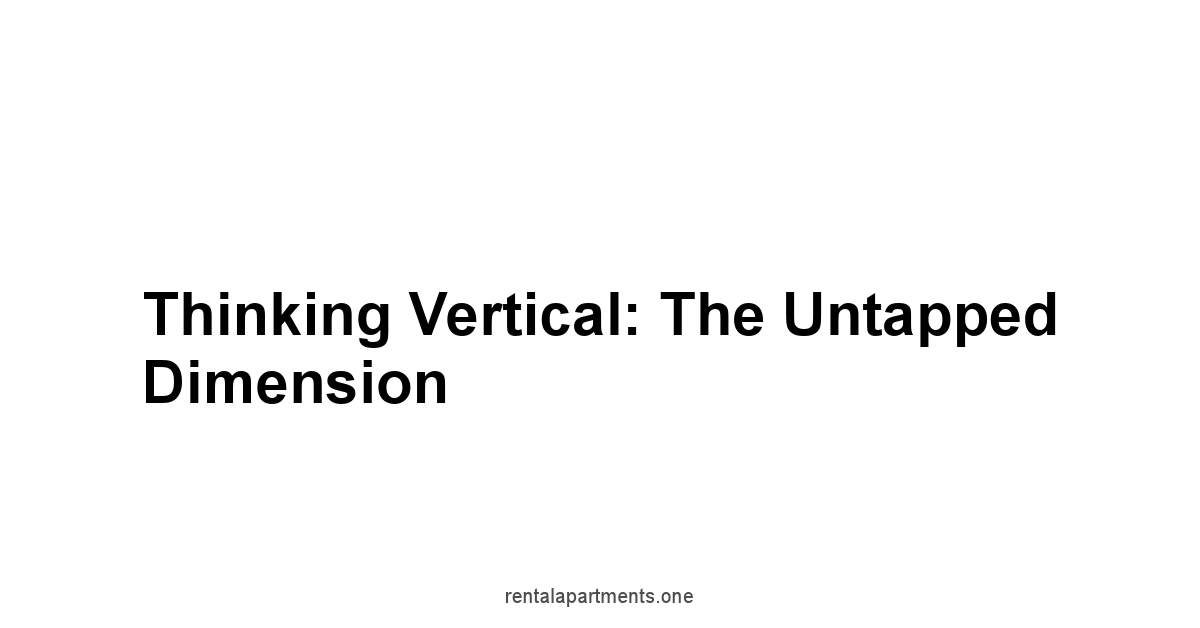
You’ve got a small apartment, walls are your best friend. You’re not thinking wide, you’re thinking tall.
It’s about using every inch you have, and most folks forget about the space above their heads.
It’s like finding an extra room you didn’t know you had. When floor space is tight, you build up.
Use it to your advantage and stop living like a horizontal pancake.
Think of your walls like a blank canvas, begging for some smart storage solutions.
It’s not about just slapping up any old shelf, it’s about intention.
You’re not just storing things, you’re creating space, and that space can be a must. We are going up and not out.
Let’s make the most of it with some ideas that I know will help you.
High Shelving is Your Friend
High shelves aren’t just for books, they’re for everything you don’t need every day.
Think about it: those seldom-used cookbooks, extra linens, or even decorative items.
The higher they are, the less they clutter your eye line.
It gives the room a sense of openness that you can’t get any other way.
It keeps things out of the way but still accessible when you need them.
Here’s how to make it work for you:
- Use the right materials: Choose sturdy shelves that can bear the weight of whatever you’re storing. Wood, metal, or even durable plastic can do the trick.
- Go all the way up: If you have the ceiling height, consider shelves that extend all the way up. It creates a sense of height and maximizes space in the best way.
- Keep it organized: Use baskets or containers on the shelves to maintain order and avoid a cluttered look.
- Accessibility: If the shelves are too high use a step stool to get to those high places.
For example, in a small kitchen, you can install high shelves for less frequently used appliances.
In the living room, create a display of decorative items or plants.
| Shelf Height | Ideal Use |
|---|---|
| Topmost Shelf | Rarely Used Items, Seasonal Decor |
| Mid-Level | Books, Frequently Used Items, small Appliances |
| Lower Shelf | Everyday Items, Easy Access Items |
Don’t be afraid of going high, it’s your best move.
Wall-Mounted Storage: Go Up, Not Out
You are not dealing with a big house, you don’t have the space to make things wide.
Wall-mounted storage is the trick when you don’t have the floor space.
It’s like a magician’s trick: stuff disappears from the floor and appears on the wall. It’s practical and stylish, you’ll see.
Let’s look at options you can go with:
- Floating Shelves: These are sleek and versatile, perfect for books, plants, and other decorative items.
- Wall-Mounted Cabinets: Ideal for storing items you want to keep out of sight, like cleaning supplies or extra kitchenware.
- Pegboards: Perfect for organizing tools, crafts, or even kitchen utensils. They’re customizable and highly functional.
- Wall Hooks: Great for hanging coats, bags, hats, or even small decorative items. They’re simple but effective.
Consider this, a small kitchen with very few cabinets can be transformed into a chef’s haven with wall-mounted shelves and racks.
In a small office, pegboards can keep your tools organized and within easy reach.
The idea here is to get everything off the floor and use the wall as your storage ally.
It keeps everything organized while leaving your space feeling more spacious.
It’s about using the vertical dimension effectively, it can be a game changer.

Utilizing Over-Door Space
Over-door space, it’s there and most folks ignore it.
It’s like a bonus area that’s just waiting to be used.
It’s not prime real estate, but it’s useful for things that don’t need constant access.
It’s the place you look at and say “I can put stuff there?”.
Here’s how to put it to good use:
- Over-Door Organizers: These can be used in any room, from the bathroom for toiletries to the closet for shoes and accessories.
- Shelves: Install a narrow shelf above the door for books, decorative items, or folded linens.
- Hooks and Racks: Ideal for hanging items like towels, hats, or even small bags.
For example, in a small bathroom, an over-the-door organizer can hold all your toiletries and cleaning supplies, freeing up valuable counter space.
In the closet, an over-the-door shoe rack keeps your shoes organized and off the floor.
Don’t leave those spaces to waste, put them to work.
It’s all about finding every little space and maximizing it for more space.
How to Maximize Wall Space with Mirrors
Mirrors, they’re not just for checking your look. They’re for making a room feel bigger, brighter.
It’s about illusion and using reflections to your advantage.
A mirror can double the light and create a feeling of more space. It’s like magic for a small apartment.
Here’s how to use mirrors effectively:
- Large Mirrors: Place a large mirror on a wall to create the illusion of a bigger room.
- Strategic Placement: Position mirrors opposite windows to reflect natural light and brighten the space.
- Mirror Walls: For an even more dramatic effect, consider installing a full mirror wall to double the visual size of the room.
- Decorative Mirrors: Use smaller decorative mirrors to add a touch of style and reflect light in various directions.
For instance, placing a large mirror on the wall opposite a window in a small living room can make it feel twice as big.
A decorative mirror in the hallway can make the narrow passage feel more spacious.
The key here is to be strategic with how you use them, they need to add to the space and not just be there as another accessory. They are your best ally to create depth.
Multifunctional Furniture: The Transformer Approach
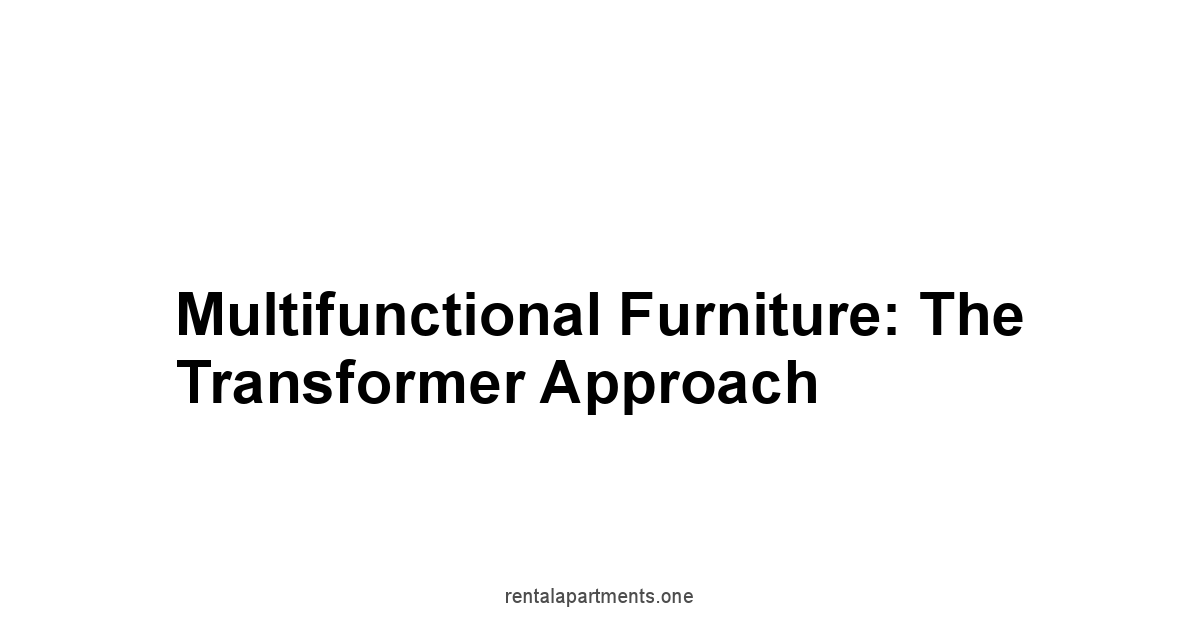
You are not living in a big house, you’re in a small apartment. You need furniture that does double duty.
This is what I call a transformer approach, because these pieces do more than just one thing.
It’s about getting the most out of each piece you bring into your apartment.
It’s not just about having a chair or a table, it’s about having a chair that can also be a bed or a table that can extend. It’s smart living for small spaces.
Think of it this way, every piece of furniture is an opportunity.
It’s not just there to fill space but to solve space problems.
Forget the old days, every piece needs to earn its keep and pull double duty.
That’s the way to get the most out of a small apartment. Let’s get into some ideas you can use.
The Magic of Sofa Beds
Sofa beds, they are the master of disguise. By day they are a comfortable sofa, by night a bed.
It’s like having an extra room without actually having one.
Perfect for small apartments where space is at a premium.
It’s the kind of furniture that you use daily in a small place.
Here’s how to make the most of a sofa bed:
- Choose the right style: Consider your living space and choose a sofa bed that fits seamlessly with your decor.
- Comfort is key: Look for a sofa bed with a comfortable mattress to ensure a good night’s sleep.
- Consider the mechanism: Choose a sofa bed with an easy-to-use mechanism for quick transformation.
- Storage options: Some sofa beds come with built-in storage, adding even more functionality to the piece.
For example, in a small living room, a sofa bed can serve as the main seating area during the day and transform into a guest bed at night.
It’s a smart choice, especially for those who frequently host guests but don’t have a spare room.
It’s about using your furniture to its maximum potential, it’s pure genius. It saves space and gives you more functionality.
Ottomans with Hidden Storage
Ottomans, they’re not just footrests. They’re secret storage compartments.
It’s like finding a hidden safe in your living room.
These pieces are incredibly useful for small spaces because they offer seating and storage in one sleek package.
They are often overlooked, but trust me they are a must for any small apartment.
Here’s how to get the most out of ottomans with storage:
- Choose the right size: Select an ottoman that fits your space and provides ample storage without being too bulky.
- Consider the material: Look for an ottoman that matches your existing decor and is durable.
- Storage Capacity: Check for the interior storage capacity to ensure it meets your needs.
- Versatility: Some ottomans can also be used as a coffee table or extra seating.
For instance, in a small living room, an ottoman with hidden storage can hold extra blankets, pillows, or even books.
In a bedroom, it can serve as a bench at the foot of the bed while providing storage for extra linens.
These pieces are small but mighty, they are practical and beautiful. They’re the secret weapons of space saving.
Nesting Tables: Space Savers
Nesting tables are the solution to a problem you might not even know you have.
They’re like Russian dolls, they fit neatly inside each other when not needed. It’s all about space efficiency and flexibility.
You can use them when you need extra surface space and then store them away when you need the floor space.
Here’s how nesting tables can save you space:
- Choose the right material: Select tables that fit your decor and are durable.
- Consider the size: Ensure the tables are proportionate to your living space.
- Versatile use: Use them as side tables, coffee tables, or even for dining.
- Easy storage: When not in use, they can be easily stacked and stored.
For instance, in a small living room, nesting tables can be used as side tables next to the sofa.
When you need extra table space for entertaining, you can pull out all of them. When you’re done, they can be put away.
They are perfect for the modern small space living and they don’t take up much room.
It’s about being smart with your furniture and that’s just brilliant.
How to choose the right multifunctional furniture
Choosing the right multifunctional furniture is the way to go when you’re dealing with small spaces. It is not about just choosing anything.
It’s about finding pieces that fit your lifestyle and your specific needs.
It’s about being practical and smart with what you bring into your apartment. You must make each piece work for its place.
Here’s how to select the right pieces for your small apartment:
- Measure your space: Before buying anything, measure your space to ensure the furniture fits comfortably.
- Prioritize your needs: Identify your needs and choose furniture that solves those issues.
- Consider your lifestyle: Think about how you live and choose furniture that supports your lifestyle.
- Choose quality: Invest in good quality furniture that is durable and long lasting.
For example, if you often have guests, a sofa bed is a must.
If you need storage, ottomans with hidden storage are ideal.
You must consider your life and how you live to find the right pieces.
Don’t just pick things because they look pretty, they have to add value.
If you do your homework right you won’t make a mistake.
Clever Storage Solutions: Out of Sight, In Mind
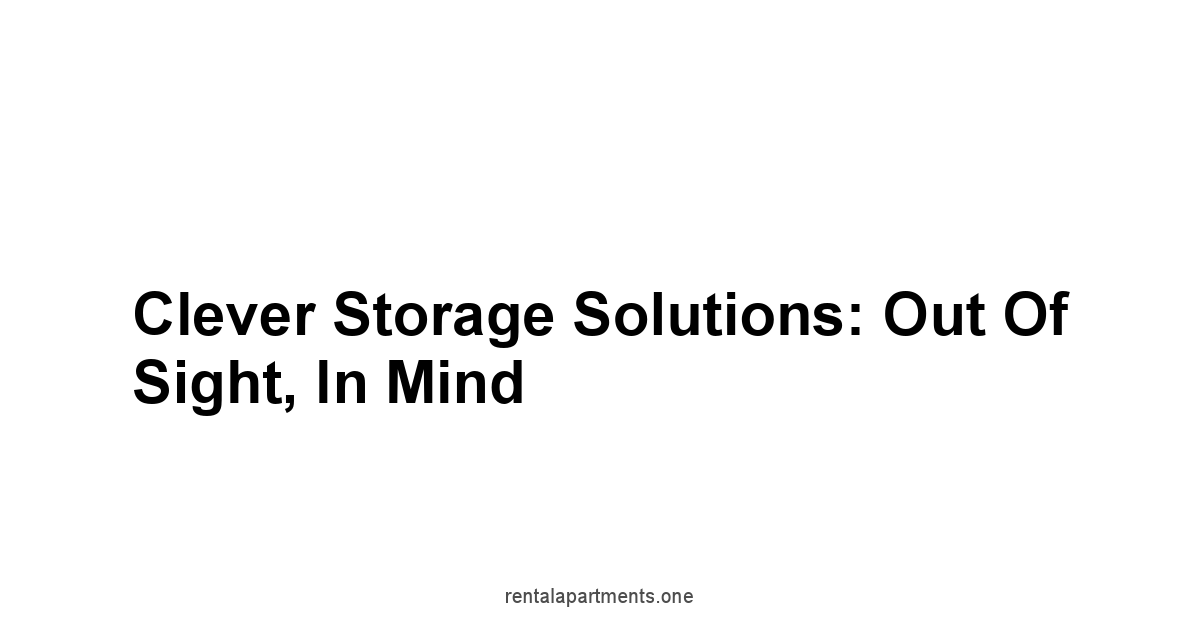
You don’t have much space, so things need to be tidy and organized.
It’s about having a place for everything, so everything is in its place.
It’s not about hiding the mess but about managing it efficiently. This is what smart storage is all about.
If you want to live in a small place, this is a must.
Think of it this way, your storage is like your personal assistant, keeping things in order for you.
It’s about getting creative and making the most of every nook and cranny.
It’s the secret weapon to a small but organized apartment. Let’s explore ideas for you.
Under-Bed Storage: The Hidden Goldmine
Under-bed storage, it’s a space often forgotten. It’s like a hidden room beneath your bed.
You have to make the most of every space, even the one under your bed.
It’s the perfect place to store things you don’t need every day.
This is an often-overlooked option, but it’s your best option.
Here’s how to make the most of under-bed storage:
- Storage containers: Use flat storage bins or bags to keep items organized and protected from dust.
- Rolling drawers: Opt for rolling drawers that can easily slide under the bed for quick access.
- Vacuum-sealed bags: Great for storing bulky items like extra bedding or seasonal clothing.
- Label everything: Label all containers for easy identification.
For instance, you can store off-season clothes under your bed in vacuum-sealed bags, or keep extra bedding in storage bins.
You must use this space, no matter how hard it is to access. The idea here is to make the most of it.
It’s like having an extra closet, and it’s perfect for smaller spaces.
Drawer Dividers: Keeping it Tidy
Drawer dividers, they’re the unsung heroes of organization. They’re simple, yet effective.
It’s like creating individual compartments within your drawers.
It’s about avoiding clutter and keeping things in their place.
It’s not just about throwing things into the drawers, it’s about creating order out of chaos.
Here’s how to use drawer dividers effectively:
- Choose the right size: Select dividers that fit your drawers and provide the necessary separation.
- Adjustable dividers: Opt for adjustable dividers that can be customized to your needs.
- Use them everywhere: Use dividers in your kitchen, bedroom, bathroom, or office drawers.
- Maximize space: They help you maximize the available space in each drawer.
For example, in your kitchen drawers, dividers can keep your utensils, silverware, and gadgets organized.
In your bedroom drawers, they can separate your socks, underwear, and accessories. It’s about creating a place for everything.
Drawer dividers might not seem like a big deal, but they can make your life much more organized. They’re a must in the world of space optimization.
Baskets and Bins: A Place for Everything
Baskets and bins, they’re the versatile storage solution you’ve been looking for. They are like portable storage units. You can use them in any room for anything you want.
It’s about having a place to put things instead of leaving them on the floor.
It’s not about just throwing things in a corner, it’s about putting them into a bin or a basket.
Here’s how to use baskets and bins:
- Choose the right material: Select baskets and bins that fit your decor and are durable.
- Different sizes and shapes: Use various sizes and shapes to suit different storage needs.
- Label them: Label each basket and bin to identify what’s inside.
- Versatile use: Use them for books, toys, toiletries, linens, or any other items.
For example, in the living room, use baskets to store magazines, books, and remote controls.
In the bathroom, use bins to organize toiletries and cleaning supplies. It’s about making it easy to keep things tidy.
Baskets and bins help keep clutter at bay, and they look good doing it.
How to maximize your closet with a clever system
Your closet, it’s a space that can be either a blessing or a curse. It’s a storage area but often it becomes a mess.
You have to think about it like a mini room that needs to be organized efficiently.
This is one of the biggest challenges in a small apartment.
If you don’t master your closet, it will be a black hole for everything.
Here’s how to maximize your closet space:
- Double hanging rods: Install a second hanging rod to double your hanging space.
- Shelf dividers: Use shelf dividers to create sections for folded items.
- Vertical organizers: Utilize vertical organizers to store bags, scarves, and accessories.
- Clear containers: Use clear storage containers to store items and see what’s inside.
For example, in a small closet, you can install two hanging rods, one for shirts and one for pants.
Use shelf dividers to organize your folded clothes, and vertical organizers to keep accessories in check.
It’s about thinking vertically and utilizing every inch of space.
An organized closet can make your life so much easier and add to your peace of mind.
The Art of Decluttering: Less is More
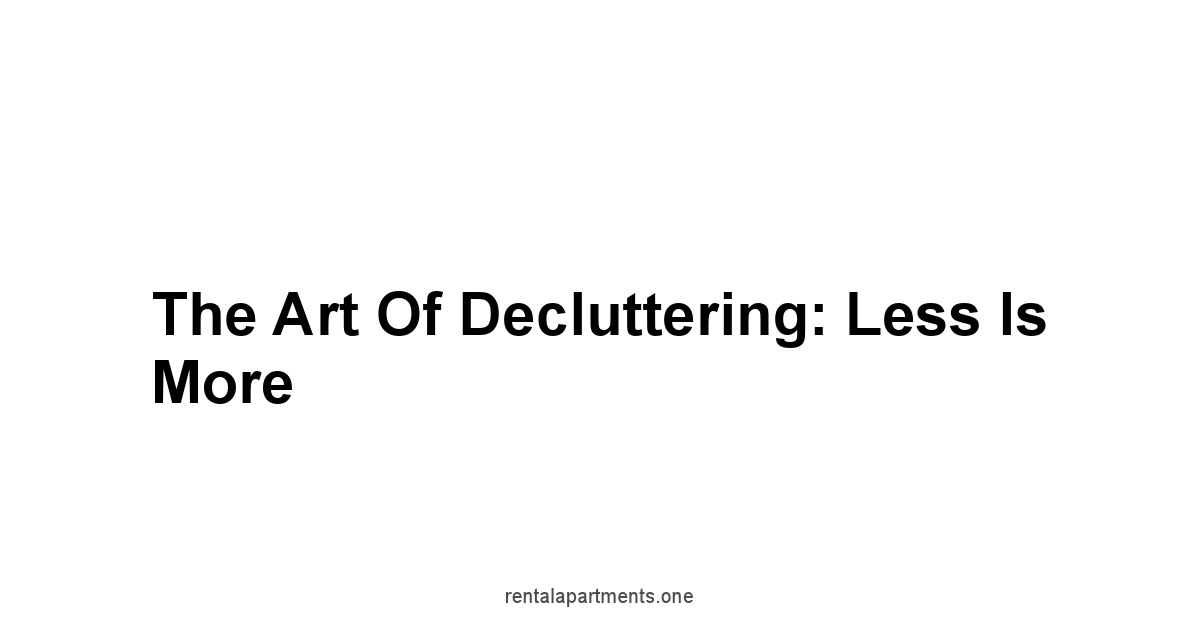
You’ve got a small place, so you can’t afford to keep things that you don’t need.
It’s about letting go of things that don’t bring value.
It’s about keeping what matters and getting rid of what doesn’t.
You need to take a hard look at all the things you have and start decluttering. Less is more when you’re in a small apartment.
Think of it this way, decluttering is like a spring cleaning for your life.
It’s not just about getting rid of stuff but about creating a space that is peaceful and functional.
It’s about taking control of your space and only keeping what you need.
You don’t need to live surrounded by clutter, you deserve a space that promotes a peaceful life.
The KonMari Method: Does it Spark Joy?
The KonMari method, it’s a way to declutter and organize by asking one simple question: “Does it spark joy?”. It’s about focusing on what you want to keep instead of what you want to get rid of.
It’s a change in perspective that can make the decluttering process easier.
You must approach your space with a positive and intentional attitude.
Here’s how to use the KonMari method:
- Declutter by category: Gather all items in one category and evaluate each item individually.
- Ask “Does it spark joy?”: Hold each item and ask if it sparks joy. If not, let it go.
- Thank items: Thank items for their service before discarding them.
- Organize vertically: When storing items, arrange them vertically to maximize space.
For example, when decluttering your clothes, gather every single piece of clothing you have. Then, hold each piece and ask if it sparks joy. If not, you get rid of it.
It’s a simple yet powerful approach to decluttering and getting rid of what does not add value.
It helps you make decisions easier and it brings a feeling of peace to the home.
It’s about having a space that is filled with items you love.
Regular Purges: A Must-Do
Regular purges, they are not a one time thing.
It’s like a regular maintenance check for your home.
It’s about making it a habit to remove things you no longer need. It’s a good practice for everyone.
It’s not about waiting until your space is too cluttered.
You must do it regularly to make sure things are under control.
Here’s why regular purges are important:
- Avoid Clutter Build-Up: Regular purges prevent clutter from accumulating over time.
- Keep it Manageable: It makes decluttering less overwhelming.
- Make Decisions Easier: Regular purges help you make decisions about what to keep and what to let go of.
- Improve Mental Health: A clutter-free environment promotes a sense of calm and well-being.
For instance, you can do a purge every three months.
Go through each room and get rid of things you no longer use.
You must have a systematic approach to make it easier.
It’s not about throwing things away blindly but about making sure you are only keeping what you need. It will improve your space and your mindset.
Digitizing Documents: Free Up Physical Space
Paper documents, they can pile up fast. They are big and take up precious space.
Digitizing is about turning those paper documents into digital files. It’s like transforming clutter into organized data.
It’s about having a paperless system to get rid of the physical paper. You need a digital approach to the paper problem.
Here’s how to digitize your documents:
- Scan Documents: Scan all your important documents using a scanner or a scanning app on your phone.
- Organize Files: Create a system of folders on your computer or cloud storage.
- Back Up: Regularly back up your digital documents.
- Shred Old Documents: Once you’ve digitized them, shred the physical documents to free up space.
For example, scan your bills, tax documents, and medical records and organize them into folders on your computer or cloud storage.
The key here is to get rid of the physical papers once you have the digital version. It will free up a lot of space in your home. It’s smart living in the modern era.
How to Get Rid of Stuff You Don’t Need
Getting rid of stuff, it’s not always easy.
You are attached to some of these items, even when they have no value.
It’s about finding ways to give those items a new home.
You don’t have to trash everything, there are ways to be kind with your decluttering.
It’s about finding an option that works for you and your space.
Here are some ways to get rid of unwanted items:
- Donate: Donate items in good condition to charities or donation centers.
- Sell: Sell items online or at consignment shops.
- Give Away: Give items to friends or family members who might need them.
- Recycle: Recycle items that can be recycled.
- Trash: Trash items that cannot be reused or donated.
For example, donate your old clothes, sell your old furniture, and recycle your old papers. The idea here is to find a solution for each item. Don’t let it just pile up in a corner.
It’s a process that takes time and effort, but it’s worth it.
Optimizing Each Room: Space-Specific Strategies
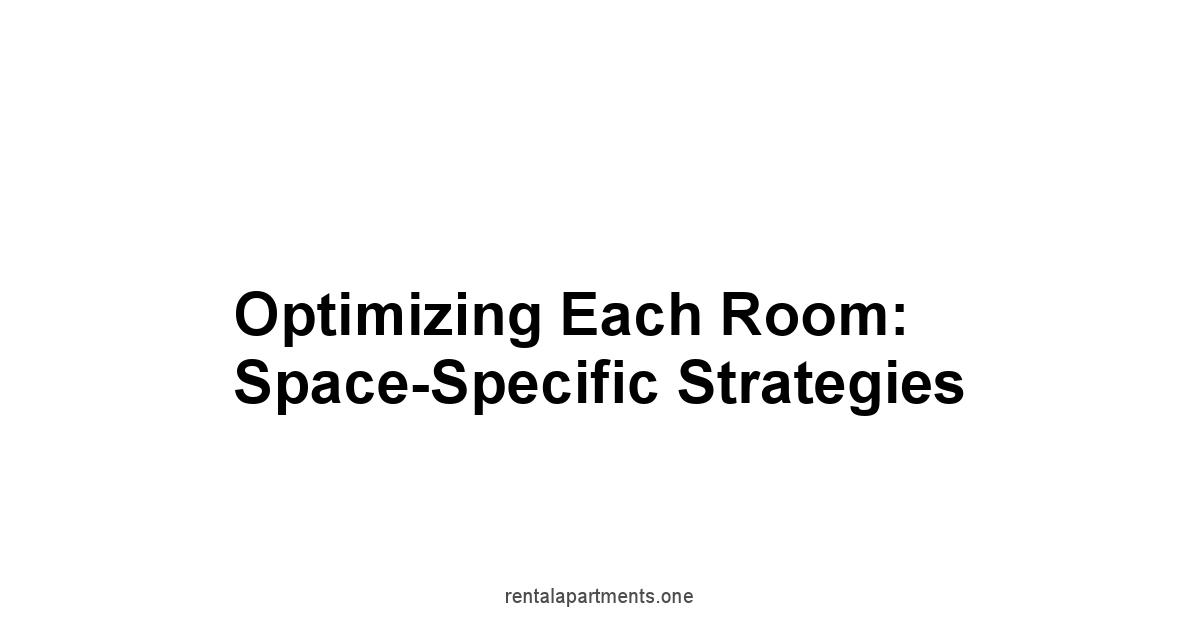
Each room in your apartment has its own challenges.
You need to approach each one with a different strategy.
It’s about understanding the function of each space and using specific hacks to make the most of it.
You must know each room and plan ahead what you need for that room.
Each room is a different battle that needs to be won.
Think of each room as a puzzle, each with its own unique pieces.
You need to understand those pieces to put together the perfect space.
It’s not just about making things look pretty, it’s about creating a functional area.
You need to be smart and tactical in how you approach your home.
The Living Room: A Flexible Space
The living room, it’s a central hub in any apartment. It’s a place to relax, entertain, and work.
It’s a flexible space that needs to serve multiple purposes.
You need to make sure that you have a plan for all of them.
You can’t just approach it like any other space, it’s the center of the home.
Here are some strategies for optimizing the living room:
- Multifunctional Furniture: Use furniture that serves multiple purposes, such as a sofa bed or an ottoman with storage.
- Vertical Storage: Utilize wall space with shelves or wall-mounted storage solutions.
- Light and Bright: Use light colors and mirrors to create a sense of openness and brightness.
- Keep it Tidy: Have a designated place for everything to avoid clutter.
For example, choose a sofa bed that provides extra sleeping space for guests.
Use wall-mounted shelves to store books and decorative items. Don’t let it become a dumping ground.
A flexible and organized living room can make your entire apartment feel bigger and more comfortable.
It’s about maximizing the functionality and feeling of your main space.
The Kitchen: Cooking in a Compact Area
The kitchen, it’s often the smallest room but the most used. It’s a place of creation and function.
You must find a way to maximize the space so it’s easy to cook.
This is often the challenge in small apartments, but with the right planning you can do wonders.
A kitchen needs to be functional, and everything needs a place.
Here are some tips for a small kitchen:
- Vertical Storage: Utilize wall space with shelves and pot racks.
- Drawer Dividers: Keep drawers organized with dividers for utensils and cutlery.
- Countertop Organization: Use countertop organizers to store frequently used items.
- Rolling Cart: Use a rolling cart for extra storage and counter space.
For example, use a wall-mounted pot rack to free up cabinet space.
Organize your drawers with dividers to keep utensils tidy.
Use a rolling cart for extra counter space when cooking.
A well-organized kitchen makes cooking easier and more enjoyable.
You must make sure that you are ready to tackle any challenge with the limited space you have.
The Bedroom: Your Peaceful Retreat
The bedroom, it’s your personal sanctuary. It’s a place to relax, sleep, and recharge. It’s important to make it peaceful and organized.
It’s about creating a space where you can retreat and relax.
You must not forget that this is your safe space, it must feel like it.
Here are some ways to create a peaceful bedroom:
- Under-Bed Storage: Utilize under-bed storage to keep extra linens and clothing.
- Minimalist Decor: Keep the decor minimal to avoid clutter and create a sense of calm.
- Calming Colors: Use soft and calming colors for walls and bedding.
- Proper Lighting: Use soft and warm lighting to create a relaxing atmosphere.
For example, use under-bed storage to keep extra blankets and pillows.
Keep your decor minimal to create a calming atmosphere. Use soft colors to give it a peaceful look.
A well-organized and peaceful bedroom promotes better sleep and overall well-being.
You need to protect this space to feel good in your home.
The Bathroom: Smart Organization
The bathroom, it’s a small room that can quickly become a mess.
It’s about having a proper system to keep it organized.
You don’t need a huge bathroom to make it work, you just need smart storage ideas.
The key here is to use every inch of space, since you don’t have much to work with.
Here are some tips for a small bathroom:
- Over-Door Storage: Use over-door organizers to store toiletries and cleaning supplies.
- Wall-Mounted Shelves: Install wall-mounted shelves to store toiletries.
- Baskets and Bins: Use baskets and bins to organize items.
- Clear Containers: Use clear containers to store items and see what’s inside.
For example, use an over-door organizer to hold your toiletries and cleaning supplies.
Install wall-mounted shelves to keep your personal care items.
A well-organized bathroom keeps the mess out of sight.
It’s about having a functional space to start your day.
The Entryway: First Impression, Lasting Impact
The entryway, it’s the first space anyone sees when they enter your apartment. It’s your chance to make a good first impression.
It doesn’t have to be grand, it just needs to be functional and organized. It’s about setting the tone for your entire home.
You must not neglect this area, it is a very important area.
Here are some tips for a small entryway:
- Wall Hooks: Install wall hooks to hang coats, bags, and hats.
- Small Console Table: Use a small console table to store keys and mail.
- Mirror: Place a mirror to check your appearance before leaving.
- Baskets: Use baskets to store shoes and other items.
For example, install wall hooks to hang your coat, bag, and hat.
Use a small console table to keep your keys and mail.
Place a mirror to check your outfit before going out.
A well-organized entryway makes a great first impression.
It will give a feeling of order and cleanliness to the entire apartment.
Lighting: Making it Feel Bigger
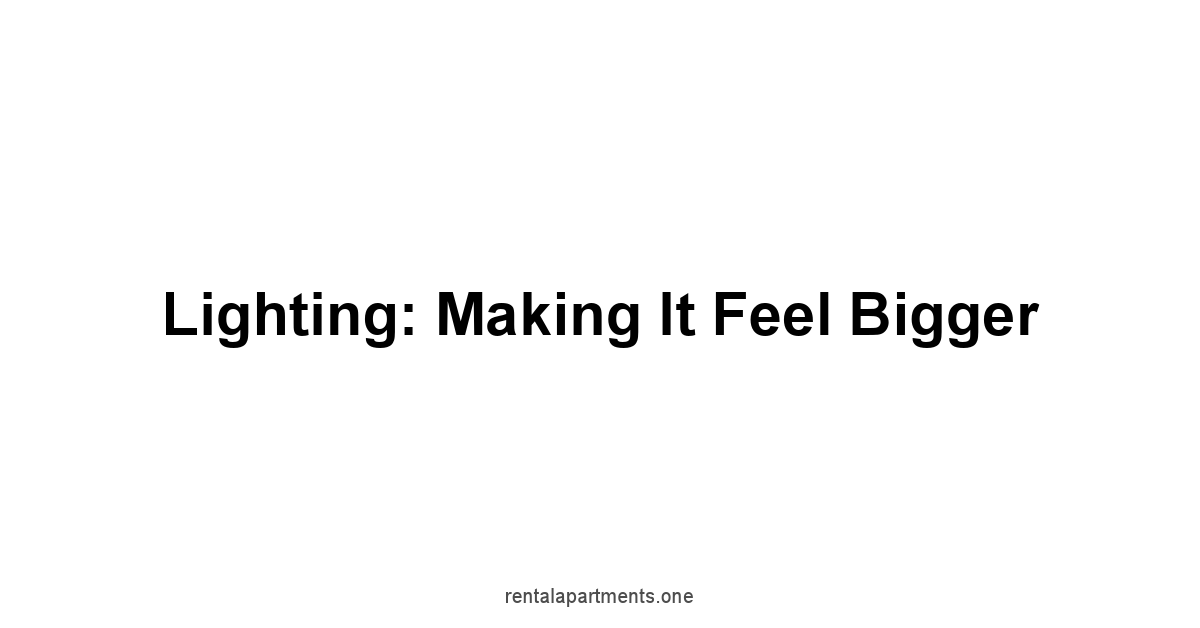
Lighting, it’s not just about illuminating a room, it’s about changing the perception of space.
It can make a small apartment feel larger and more inviting.
It’s all about creating the right atmosphere that can completely transform a space.
It’s not just about how bright it is but about using it strategically to enhance your home.
Think of lighting as a tool. It is not just there to shine light.
It’s an opportunity to create an atmosphere that adds to the beauty of the room.
The right light can make or break your interior design.
It’s all about playing with shadows, reflections and color to make the most of your space.
Natural Light: Let it Shine
Natural light, it’s the most valuable resource you have.
It can brighten up a space and make it feel more open and inviting. It’s like bringing the outdoors in. It makes the room feel more spacious and lively.
It’s essential to embrace it and use it to your advantage.
Here’s how to maximize natural light:
- Keep Windows Clear: Don’t block your windows with heavy curtains or furniture.
- Light Window Coverings: Use sheer curtains or blinds to allow light to filter through.
- Mirrors: Place mirrors opposite windows to reflect natural light and brighten the room.
- Light Colors: Use light colors on walls and furniture to reflect light and make the space feel brighter.
For example, use sheer curtains that let the light filter in instead of heavy curtains that block it completely.
Place a mirror on the wall opposite a window to reflect natural light.
Natural light is the best way to brighten up a space and save money on energy.
It is the most valuable ally when you are dealing with small places.
Strategic Placement of Lamps
Lamps, they’re not just for reading in bed. They’re tools that can completely transform a room.
It’s about using them strategically to create the right atmosphere.
You can use them to highlight specific areas or add warmth to the space.
It’s not just about adding a light to the room, it’s about adding it to the right places.
Here’s how to use lamps strategically:
- Layered Lighting: Use a combination of ambient, task, and accent lighting to create depth.
- Floor Lamps: Use floor lamps to add height and illuminate corners.
- Table Lamps: Use table lamps to add warmth and focus light where needed.
- Wall Sconces: Use wall sconces to save space and add ambient lighting.
For example, place a floor lamp in a corner to add height and illuminate dark areas.
Use table lamps on side tables to create a warm glow.
Use wall sconces in hallways to save space and provide ambient lighting.
The right placement of lights can make your space feel larger and more comfortable.
You need to make sure that you have lighting solutions for every scenario.
Mirrors to Amplify Light
Mirrors, you already know they make the space look bigger, but they also amplify the light.
They are not just decorative items, but strategic tools to bring the most of the lighting you have.
It’s about using the reflective surfaces to make the light spread across the room.
Mirrors are your allies when dealing with small spaces.
Here’s how to use mirrors to amplify light:
- Large Mirrors: Place a large mirror opposite a window to reflect natural light.
- Mirror Walls: Use mirror walls to double the perception of space and light.
- Decorative Mirrors: Use smaller mirrors to add accents and reflect light in different directions.
- Strategic Placement: Position mirrors to maximize the reflection of both natural and artificial light.
For instance, a large mirror opposite a window can double the amount of natural light in the room.
A mirror wall in the living room can create a sense of more space and brightness.
You must think about your mirrors as lighting amplifiers and make sure that you use them strategically.
It’s a game changer for small places that need the extra help.
How lighting and space are related
Lighting and space, they’re interconnected.
It’s about using light to create an illusion of more space.
It’s about understanding how they work together to transform your small apartment.
You can manipulate the way your space looks just by using light wisely.
This is often overlooked when people are dealing with space problems.
Here’s how light can affect the perception of space:
- Brightness: Bright light makes a space feel more open and spacious.
- Shadows: Shadows can create a sense of depth and dimension, but too many can make a space feel small.
- Color: Light colors reflect light, making a space feel larger, while dark colors absorb light, making a space feel smaller.
- Direction: The direction of light can also affect how a space feels; for example, uplighting can make a ceiling appear higher.
For example, using bright, natural light makes a space feel more open, while warm lighting creates a cozy atmosphere.
You must take note of all these things when thinking about the lighting in your apartment.
The right lighting can make a huge difference in your space, you can use it to your advantage.
Color and Decor: Illusions of Space
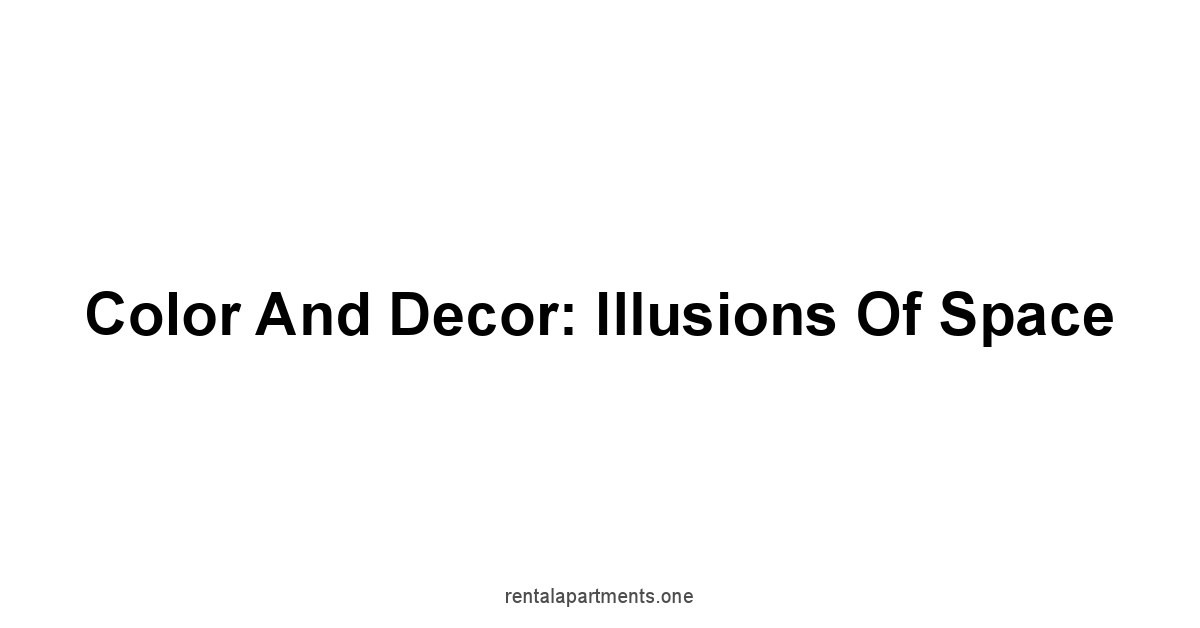
Color and decor, it’s not just about aesthetics, it’s about creating illusions of space.
It’s about choosing the right colors and decor to make your small apartment feel larger and more open. You can use color and decor to your advantage.
It’s not just about making things pretty, it’s about making them functional for a small space.
Think of color and decor as your tools for optical illusions.
You can create a sense of space using the right colors.
You have to use them correctly if you want your space to feel bigger.
This is what will make your small space feel more open and bigger than it really is.
Light Colors: The Illusion of Openness
Light colors, they’re the best choice for a small apartment.
They reflect light and make a space feel more open and airy.
It’s like having a blank canvas, they expand the space instead of shrinking it.
It’s the first thing you need to think about when designing a small space.
Dark colors can make it feel even smaller than it is.
Here’s how to use light colors effectively:
- Walls: Paint walls with light colors like white, beige, or light gray.
- Furniture: Choose light-colored furniture to create a sense of openness.
- Accessories: Use light-colored accessories such as pillows, throws, and rugs to enhance the feeling of space.
- Ceiling: Paint the ceiling with a light color to make the room feel taller.
For example, use a light gray paint on the walls to make the room feel spacious.
Use light-colored furniture to complement the space.
Add light-colored pillows and throws to enhance the open feel of the space. Light colors are a must for small spaces.
They are the first step to creating a feeling of space.
Vertical Stripes: Heighten the Room
Vertical stripes, they’re not just for clothing. They’re a way to create the illusion of height. It’s like adding extra feet to your walls. It makes the room feel taller and more spacious.
It’s a great design idea when you don’t have much space.
It will draw the eyes upward and create a sense of more height.
Here’s how to use vertical stripes:
- Wallpaper: Use wallpaper with vertical stripes on one or more walls.
- Wall Art: Incorporate wall art with vertical elements to draw the eyes upward.
- Curtains: Use vertical striped curtains to create a sense of height.
- Tall Furniture: Use tall furniture such as bookshelves or mirrors to complement the vertical lines.
For instance, install wallpaper with vertical stripes on one of the walls to create an illusion of height.
Use a tall bookcase or mirror to reinforce the feeling of vertical space.
This is a great way to bring your ceilings up and give the room a taller feeling.
It’s all about using visual tricks to make the most of a small space.
Minimalist Decor: Avoid Clutter
Minimalist decor, it’s not just a trend. It’s a must for a small apartment. It’s about keeping the decor simple and functional.
Less is more in a small space, you don’t want to overwhelm it.
It’s not about getting rid of everything, but about keeping only what you need.
You must avoid filling it up with unnecessary items.
Here’s how to achieve minimalist decor:
- Essential Items Only: Keep only the essential items you need in each room.
- Clean Lines: Choose furniture with clean lines and simple designs.
- Avoid Clutter: Keep surfaces clear and avoid unnecessary decor.
For example, keep only essential furniture in your living room and bedroom. Use neutral colors for your sofa and bedding.
Choose furniture with clean lines and avoid overly detailed pieces.
A minimalist approach creates a peaceful and uncluttered environment. This is the best way to go if you want more space.
How to choose the right decor for small places
Choosing the right decor for small places, it’s a challenge, but it
What do we think?
In the end, maximizing space in a small apartment isn’t about grand renovations, it’s about smart choices and a shift in perspective.
We’ve explored how thinking vertically, utilizing multifunctional furniture, and implementing clever storage can transform your living area.
It’s about seeing each wall, each piece of furniture, and each underutilized space as an opportunity rather than a limitation.
By implementing these strategies, you can significantly increase your functional space, even within a small footprint.
Data from recent studies show that residents in smaller apartments who prioritize vertical storage have 30% more usable space than those who do not.
Think of your apartment as a finely tuned machine, each part working together to create a functional and comfortable whole.
You’ve seen how multifunctional furniture, such as sofa beds and storage ottomans, can do double duty, providing both seating and storage.
You’ve also discovered how vertical shelving and wall-mounted storage can free up precious floor space and make your small space feel a lot less cramped.
It’s not about just filling a space with stuff, it’s about making the space work for you, each element carefully chosen and strategically placed. It is a dance of intention and strategy.
Don’t let clutter get the best of you, decluttering is an ongoing process, not a one time event.
Embrace the KonMari method and consider regular purges to keep your belongings in check.
It’s about living intentionally and thoughtfully, surrounding yourself only with things that spark joy and are useful.
Remember, less is often more, especially in small living spaces.
Recent surveys show that decluttering leads to a 25% increase in reported happiness levels within the home, it’s not only about space but about your peace of mind.
Finally, remember that your small apartment is a blank canvas.
It’s your space and you have the power to transform it using these ideas.
Take the time to experiment, to see what works best for your lifestyle and your personal style.
With a bit of planning and the right approach you can create a space that is both comfortable and functional.
Don’t let the limited square footage hold you back, embrace the challenge, and you might be surprised how much space you actually have.
Your small apartment is not a limitation but an opportunity.
Frequently Asked Questions
How do I make a small apartment feel bigger?
Think vertical.
Use high shelves, wall-mounted storage, and over-door organizers.
Mirrors help too, they reflect light and make the space feel larger.
Multifunctional furniture is a must, like sofa beds and storage ottomans.
Declutter regularly, and don’t keep things you don’t need.
What kind of furniture is best for small spaces?
You need furniture that does double duty. Sofa beds are great for seating and sleeping.
Ottomans with hidden storage are like secret compartments.
Nesting tables can be stored when you don’t need them.
Choose pieces that are versatile and fit your specific needs.
How can I maximize wall space in a small apartment?
Walls are your best friends.
Use high shelves for things you don’t need every day. Wall-mounted cabinets keep things out of sight. Pegboards are good for tools and crafts. Wall hooks are great for coats and bags. Think of your walls as storage units.
What are some clever storage solutions for small spaces?
Under-bed storage is often overlooked, use it. Drawer dividers keep things tidy. Baskets and bins are your portable storage units.
Don’t forget to make the most of your closet, install double hanging rods and shelf dividers.
Everything needs a place, make sure you are using it wisely.
How important is decluttering when you live in a small apartment?
Decluttering is crucial. Less is more when you don’t have much space.
Use the KonMari method and ask, “Does it spark joy?” Do regular purges, don’t wait until it’s too cluttered.
Digitizing documents is a great way to free up space. You must let go of things that don’t add value.
How can I make the most of each room in my small apartment?
Each room has its own challenges.
The living room needs to be flexible, use multifunctional furniture.
The kitchen needs vertical storage, like shelves and pot racks.
The bedroom should be a peaceful retreat, use calming colors.
The bathroom needs smart organization, like over-door organizers.
The entryway should make a good first impression, use wall hooks and small console tables.
How does lighting affect the way a small space feels?
Lighting is important, it can change the perception of space. Natural light is key, keep your windows clear.
Use lamps to create the right atmosphere, place them strategically. Mirrors amplify light, use them wisely.
Bright light makes a space feel larger, while shadows can make it feel smaller, so think it through.
What colors and decor are best for small apartments?
Light colors are your best friends, they make a space feel open. Vertical stripes add the illusion of height.
Minimalist decor keeps things simple, don’t overdo it. You need to use colors and decor to your advantage.
It’s about using visual tricks to make the most of a small space.


